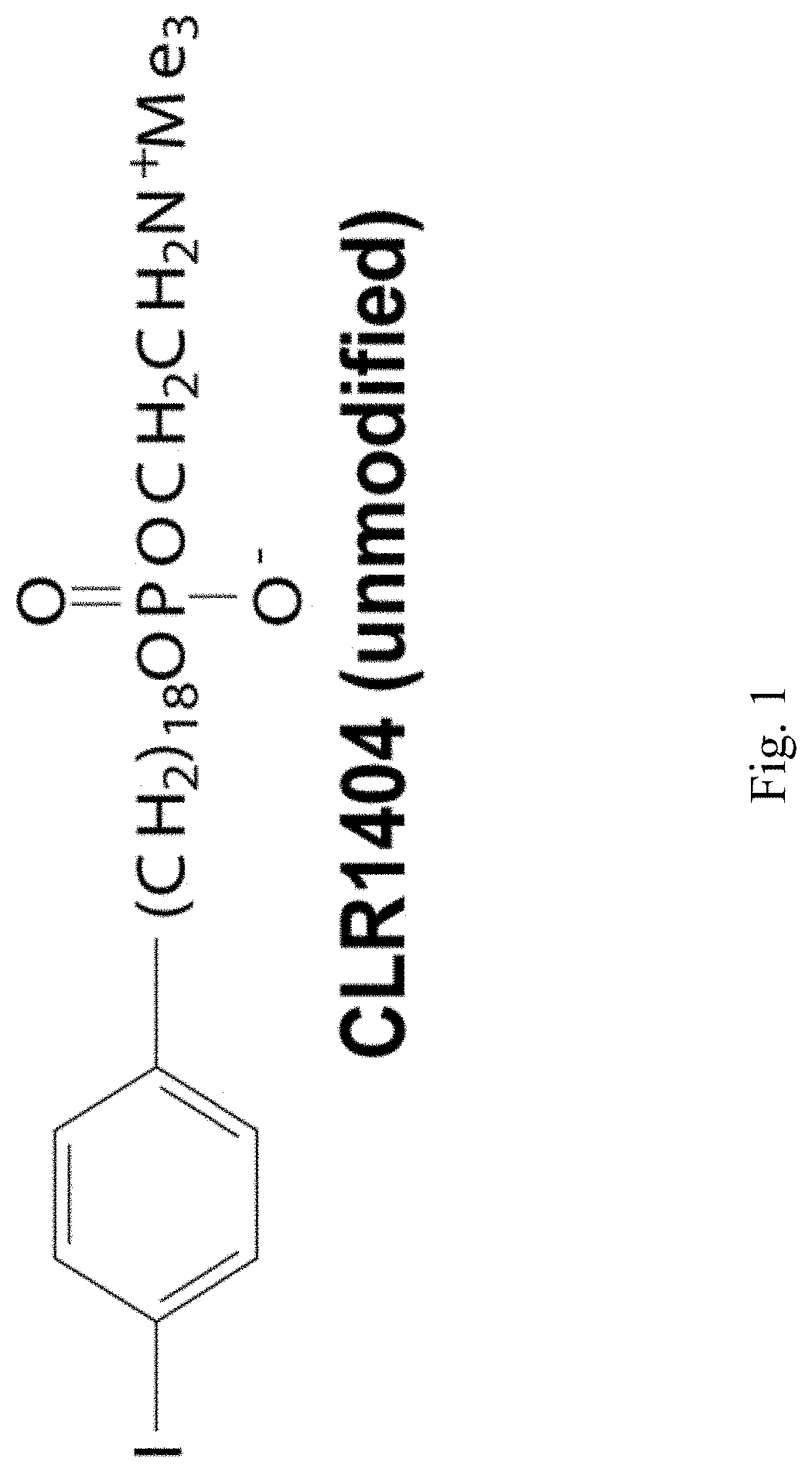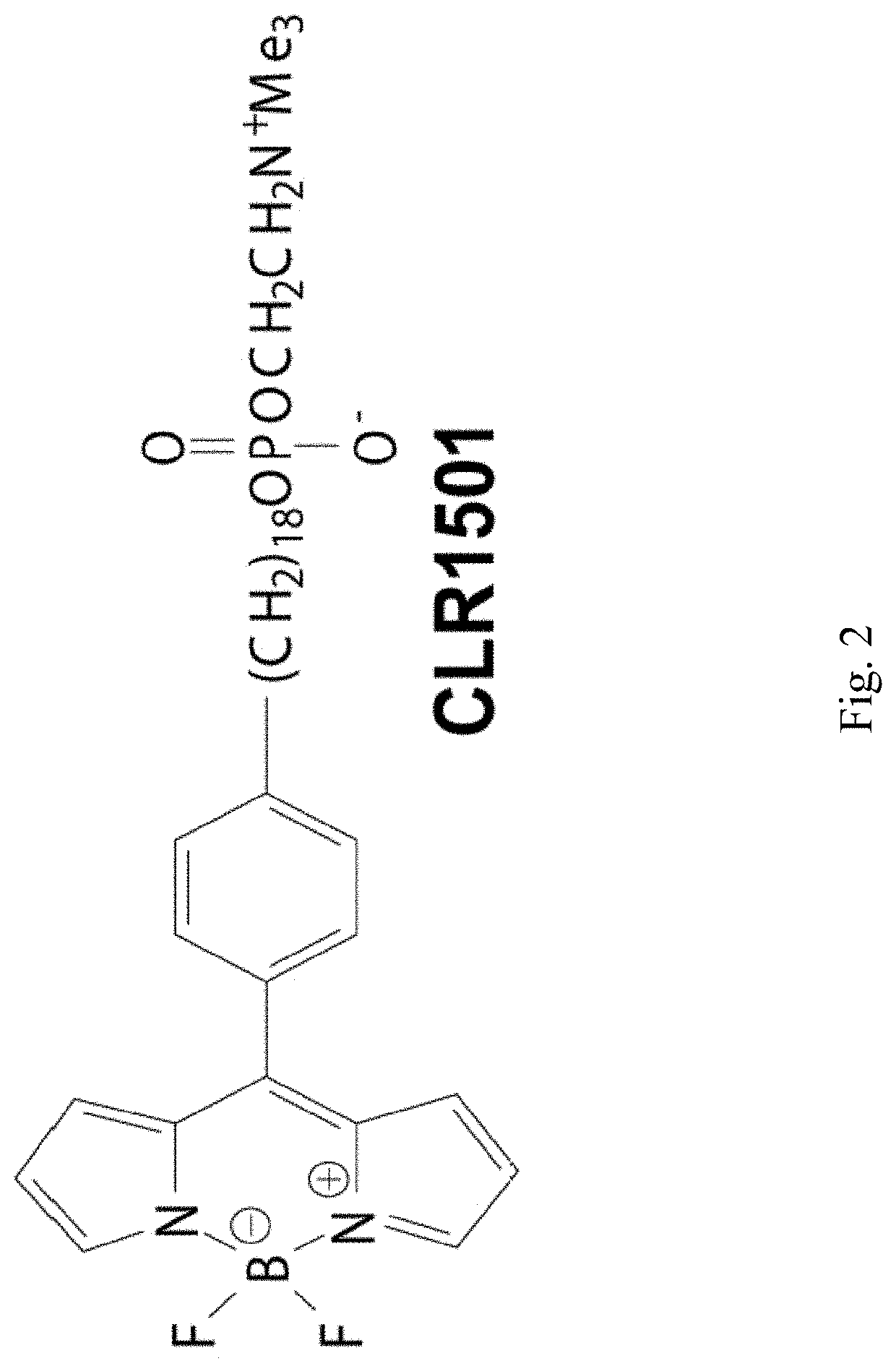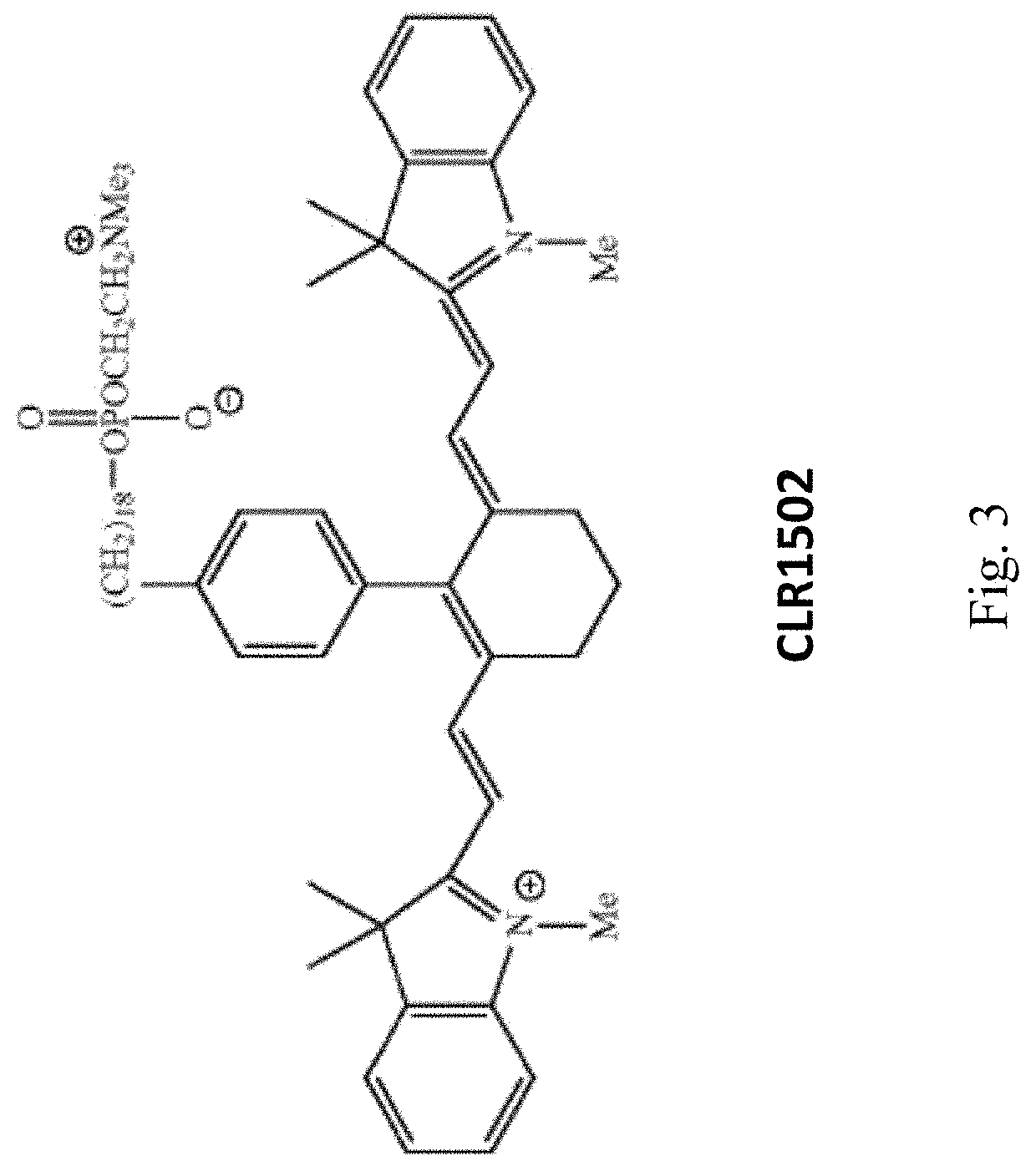Phospholipid ether analogs for imaging and targeted treatment of pediatric solid tumors
a technology of phospholipid ether and pediatric solid tumors, applied in the field of disease treatment and medical diagnosis/imaging, can solve the problems that the imaging method and imaging that may be used in the context of treating adult solid tumors would not be expected to work with pediatric solid tumors, and the results of this application were unexpected and surprising
- Summary
- Abstract
- Description
- Claims
- Application Information
AI Technical Summary
Benefits of technology
Problems solved by technology
Method used
Image
Examples
example 1
Selective In vitro Uptake of CLR1501 in Multiple Malignant Pediatric Solid Tumor Cell Lines
[0088]In this example, we demonstrate that an analog of the base compound CLR1404 having a fluorophore substituted for the iodo moiety (CLR1501) exhibits high uptake in ten different malignant pediatric solid tumor cell lines, including three neuroblastoma cell lines (NB1691, SK—N—AS and CHLA-20), two rhabdomyosarcoma cell lines (Rd, Rh-41), an osteosarcoma cell line (SAOS-2), two Ewing sarcoma cell lines (TC-71 and TC-106, and a pediatric brain tumor (glioblastoma) cell line (SJ-GBM2). In contrast, we show that these analogs exhibit much less uptake in normal human pediatric fibroblast (HUFI) cells. Results for pediatric tumor cells were comparable to uptake in an adult brain tumor (glioblastoma) cell line (MT-300) and an adult prostate adenocarcinoma cell line (PC3).
[0089]Accordingly, this example demonstrates the potential of using analogs of CLR1404 incorporating a radioactive iodine moiet...
example 2
In vivo Uptake and Dosimetry of 124I—CLR1404 in Mice Xenografted with Four Different Pediatric Sold Tumor Types
[0093]In this example, we demonstrate the differential uptake of 124I—CLR1404 in pediatric solid tumors in vivo, and its use in PET / CT imaging of such tumors. The PET / CT data was then used to predict the corresponding therapeutic dosages using 131I—CLR1404. The results were obtained using animal model systems for neuroblastoma, Ewing sarcoma and rhabdomyosarcoma.
[0094]Specifically, four mice were xenografted with one of four different pediatric tumor cell lines (CHLA-20 (neuroblastoma), NB-1691 (neuroblastoma), TC-71 (Ewing sarcoma), and Rh-30 (rhabdomyosarcoma). For each of the sixteen xenografted mice, 100 μl cell suspension containing 3×106 tumor cells (>95% viability, passage 5-25) was inoculated into subcutaneous tissue of the left flank of a 6-8 week-old NSG mouse (NOD.Cg-PrdcscidII2rgtm1Wj1 / SzJ, Jackson Laboratory, Bar Harbor, Me.). Once xenograft tumors measured a m...
example 3
Demonstrating Anti-Tumor Activity of [131I]—CLR1404 In vivo Against Six Different Pediatric Solid Tumor Types
[0101]In this example, we demonstrate the efficacy of the disclosed therapeutic strategy in mice xenografted with six distinct types of malignant pediatric solid tumors, including two different neuroblastomas (CHLA-20 and NB-1691), two different Ewings sarcomas (TC-71 and TC-106), a rhabdomyosarcoma (Rh30), and an osteosarcoma (SAOS-2).
[0102]Specifically, the analog [131I]—CLR1404, which is differentially taken up and maintained in malignant pediatric solid tumor cells, contains the radionuclide iodine-131, a radioactive isotope of iodine that locally emits potentially therapeutic doses of beta and gamma radiation. After uptake into the targeted malignant pediatric solid tumor cells, the locally emitted radiation will differentially kill the malignant pediatric solid tumor cells that take up the analog. Such bioactivity against malignant pediatric solid tumors xenografted int...
PUM
| Property | Measurement | Unit |
|---|---|---|
| volume | aaaaa | aaaaa |
| radioactive | aaaaa | aaaaa |
| positron emission tomography | aaaaa | aaaaa |
Abstract
Description
Claims
Application Information
 Login to View More
Login to View More - R&D
- Intellectual Property
- Life Sciences
- Materials
- Tech Scout
- Unparalleled Data Quality
- Higher Quality Content
- 60% Fewer Hallucinations
Browse by: Latest US Patents, China's latest patents, Technical Efficacy Thesaurus, Application Domain, Technology Topic, Popular Technical Reports.
© 2025 PatSnap. All rights reserved.Legal|Privacy policy|Modern Slavery Act Transparency Statement|Sitemap|About US| Contact US: help@patsnap.com



